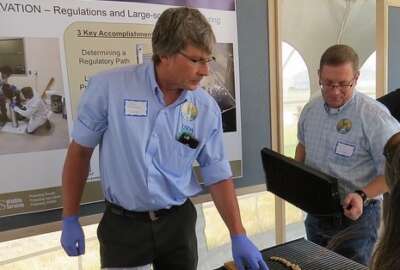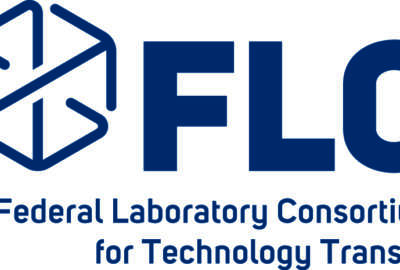Hubbard Radio Washington DC, LLC. All rights reserved. This website is not intended for users located within the European Economic Area.
The Federal Laboratory Consortium revamps its public view of technology transfers
Countless new technologies have developed under federal funding, much of it under the auspices of federal laboratories. To showcase some of these developments a...
Countless new technologies have developed under federal funding, much of it under the auspices of federal laboratories. To showcase some of these developments and the technology transfer process, the Federal Laboratory Consortium has updated its online presence known as LabTech In Your Life. For more on that, Federal Drive with Tom Temin spoke with Derek Parks, the Deputy Director of the Technology Partnerships Office at the National Oceanic and Atmospheric Administration.
Interview Transcript:
Tom Temin All right. And you also work a lot on the Federal Laboratory Consortium. Just give us an update. What is the FLC for people that may not know? And there’s quite a number of members aren’t there?
Derek Parks Yes. So the Federal Laboratory consortium, also known as the FLC, it’s a nationwide network of over 300 federal labs and research centers that are represented from 23 federal agencies. And the group works together to move innovative technologies that are developed throughout the federal lab networks from the lab space to the marketplace.
Tom Temin All right. And the online presence then, is what for the public to see what’s going on for the consortium itself to keep track. I mean, what do you how do you make sure everyone knows what’s going on?
Derek Parks Yeah. So the the consortium itself was developed with three different mission principles. So we want to promote federal tech transfer. We want to educate the tech transfer community within the federal agencies and also facilitate the transfer of technologies from the lab to the marketplace. So in this respect, what we’ve done is created something new on the FLC website, which is called LabTech in Your Life. And it’s a really unique way to kind of educate the public on what different technologies are in and around them that they really may not know about. These are kind of hidden technologies that you see every day, but you have no sense that they were there or developed by federal laboratories in the first place. So it’s pretty cool.
Tom Temin And before we get into some of those, just briefly describe the technology transfer process itself, because it’s a highly developed activity. It’s got its own acronyms and its own set of communities of practice, really, that are devoted to technology transfer.
Derek Parks Definitely. Technology transfer, I will say, is even kind of a hidden component of federal life within the federal community itself, let alone in the public. So back in 1986, the Federal Technology Transfer Act was passed in Congress, and that also gave the provisions for the creation of this group, the Federal Laboratory Consortium. But what the Federal Technology Transfer Act really said was we want to as as the United States of America, make the most use of all of these research and development dollars that are going into R&D every year and make sure that that at this point it’s over 150 billion that’s being invested in R&D. We want to make sure that those technologies are used, first of all, for the mission purpose, that’s clear. But secondly, if there are dual use purposes in the commercial sphere or some technologies that just don’t make it in the mission applications, that’s a nature of research and development. Not everything makes it directly into its intended application. Congress was saying we want to maximize those research and development dollars and make sure that the federal labs have the ability to actually transfer those technologies out of federal laboratories and into the commercial sphere where they can be exploited by U.S. companies to actually make money. And one of the key ways that we do that is through the patent process. So our colleagues over at the USPTO, we work with them very closely to get patents on the most promising technologies that we have, and that allows us to put those technologies out on the marketplace and say, here we have something for you industry that has been invested in considerably in the basic research front. It’s been proven we have something that is really ready for you to adopt and turn it into a commercial product. On top of that, we de-risk this investment by putting a patent on it so we know that we can license this to you and you have the security to say to your investors, Look, we own this for a period of 20 years, this technology will be first to market. We’ll be able to exploit this for it, and there’s no worries. So it really is a very nice process that isn’t usually associated with the federal government. It’s more of a private sector, a process. But we have the capability of doing that as well within the federal government.
Tom Temin All right. We’re speaking with Derek Parks. He’s deputy director of Technology Partnerships Office at the National Oceanic and Atmospheric Administration. NOAA. He’s also chairman of the Promote Committee of the Federal Lab Consortium, the FLC, and this showcase is entitled House and Airport, which is kind of an odd conglomeration featuring 86 technologies from nine agencies. What’s in there?
Derek Parks Well. You say it’s odd and it is at this point. It’s kind of like this weird amalgamation by redoing home and airport. But what we’re trying to do is actually build a full virtual city. So what the visitor to the website can do is actually enter into a home at this point and go from room to room and look around, click on a little icon for certain things and see what the federal technology is that’s underlying whatever it is that they’re looking at. So for example, in the home, you might click on a milk carton, for example, and learn that that’s lactose free milk. And the lactose free capability was actually developed by the Agricultural Research Service. And I thought, Oh, that’s kind of cool. Likewise, you can look at something like food labels on the back of of all of your food containers and say, well, where do those come from? The National Institutes of Standards and Technology actually developed that that schema and promulgated that throughout industry. So that’s another great success story. And then you look at things that are even a little bit deeper that you may not have understood were federal technologies like your your cell phone camera or your cell phone itself or, you know, the fancy camera that you have sitting next to your desk. Those technologies contain something called a CMOS sensor, which is prevalent throughout the photography industry. So it’s a technology that was developed by NASA in the first place. Really pretty cool. But who knew this? You know, everybody probably Oh, that was Nikon or Canon that developed that, but that was NASA. And likewise with the cell phone, you know, we walk around with these things every day, but there’s federal technology that developed the cell phone in the first place that was developed by the Department of Defense in the Army and transferred to a company that was eventually bought out by BlackBerry. Everybody knows about the Blackberries, but they probably don’t know the company. But sure. Originally undertook the technology, so very cool. So the goal is really that we want to have a complete city. And so you’ve got your house right now and you’ve got an airport, but we’re going to continue to build components of this so that you can take virtual tours of a whole city.
Tom Temin And of course, when you’re stuck waiting for a plane that may never leave, it seems like you live at the airport. So that’s your house for the time being. And airport.
Derek Parks Exactly.
Tom Temin Airports are full of technology, some that you see and encounter and some you don’t see and don’t encounter directly, fair to say. Yes.
Derek Parks And actually, one of those is from my own agency, the National Oceanic and Atmospheric Administration. There are these things called wind profilers that are set around airports all around the country, and they detect wind shear, which is kind of an important thing if you want to stay in the air. So it’s really something that’s very dangerous as you come in for for a landing with an airplane. So it’s good for the pilots and the control tower to know exactly where there’s wind shear present. And then they can they can avoid that at all costs.
Tom Temin Yeah, that windsock by the end of the runway. It won’t tell you that will it.
Derek Parks No, that just gives you general direction. So yeah.
Tom Temin And briefly the FLC, the Federal Laboratory Consortium is a busy group. You’ve got conferences and challenge contests and there’s a lot of activity that goes on throughout the year among consortium members, isn’t there?
Derek Parks Yes. So what I’ve been talking about, mainly through LabTech in Your Life, is what we do in our promote committee. We do a lot of promotion of federal technologies, but the facility committee is really engaged directly with the public. They put on a number of events that highlight different federal technologies. In essence, they’re matchmaking events in a lot of ways, but it’s really getting core groups of people, technologists, and folks who are interested in adopting new innovative technologies to gather in a room and really start talking to each other. And that’s really the goal of the facilitate side of FLC. And we have a separate technology on our website called FLC Business that is really kind of a full marketplace for those federal technologies that are available for commercialization.
Tom Temin And you have an FLC website in general, which is pretty darn good because unlike so many federal websites, names, emails, phone numbers are actually on there for people that are interested can contact the members. Just my observation.
Derek Parks What we really yeah, exactly. What we want to do is, is definitely put people in contact with the folks at the agencies who can really help them get to the technologies that they want as quickly as possible. So the goal of the FLC is really to streamline that process of getting technologies from lab to market.
Copyright © 2024 Federal News Network. All rights reserved. This website is not intended for users located within the European Economic Area.
Tom Temin
Tom Temin is host of the Federal Drive and has been providing insight on federal technology and management issues for more than 30 years.
Follow @tteminWFED





